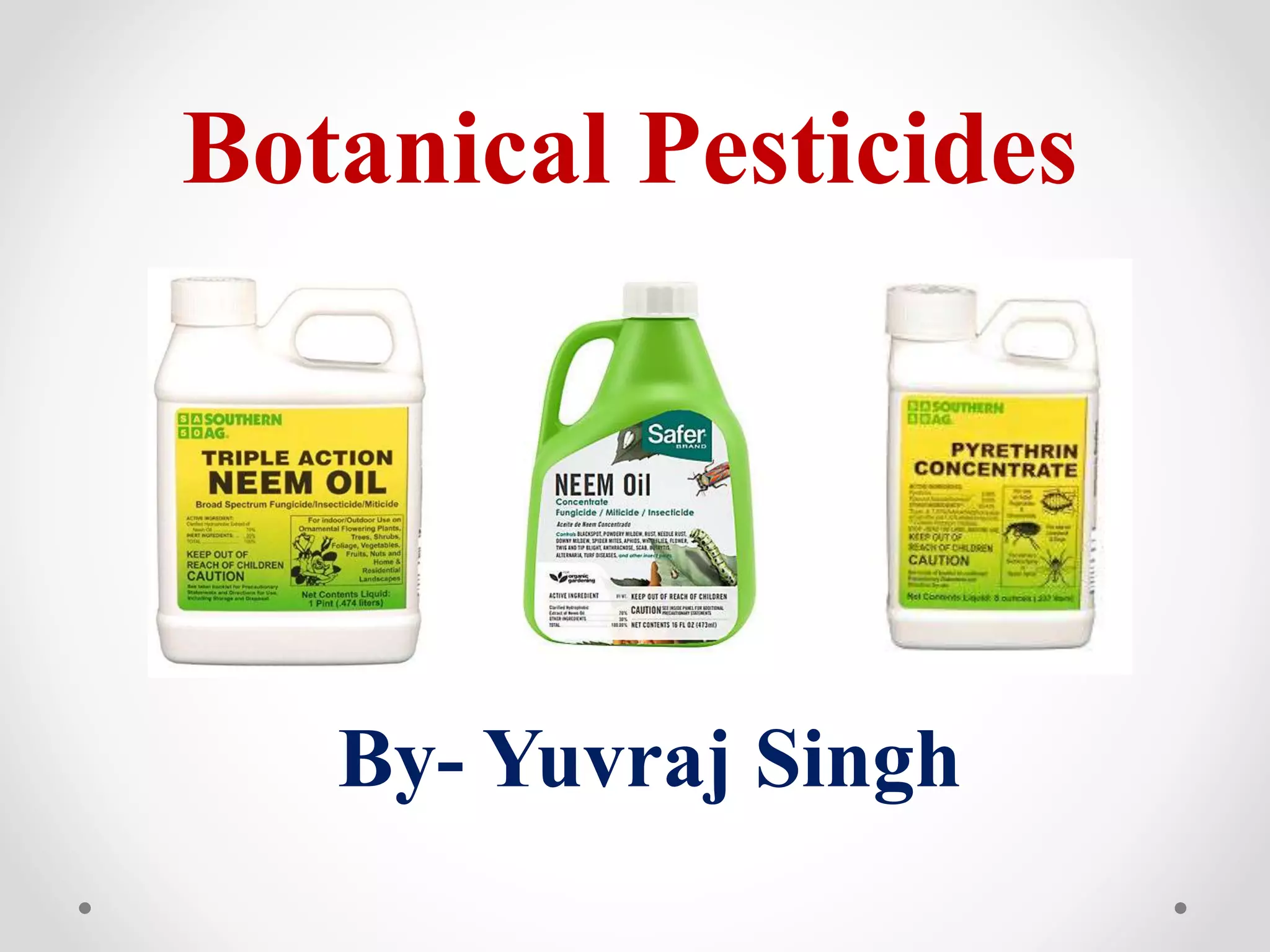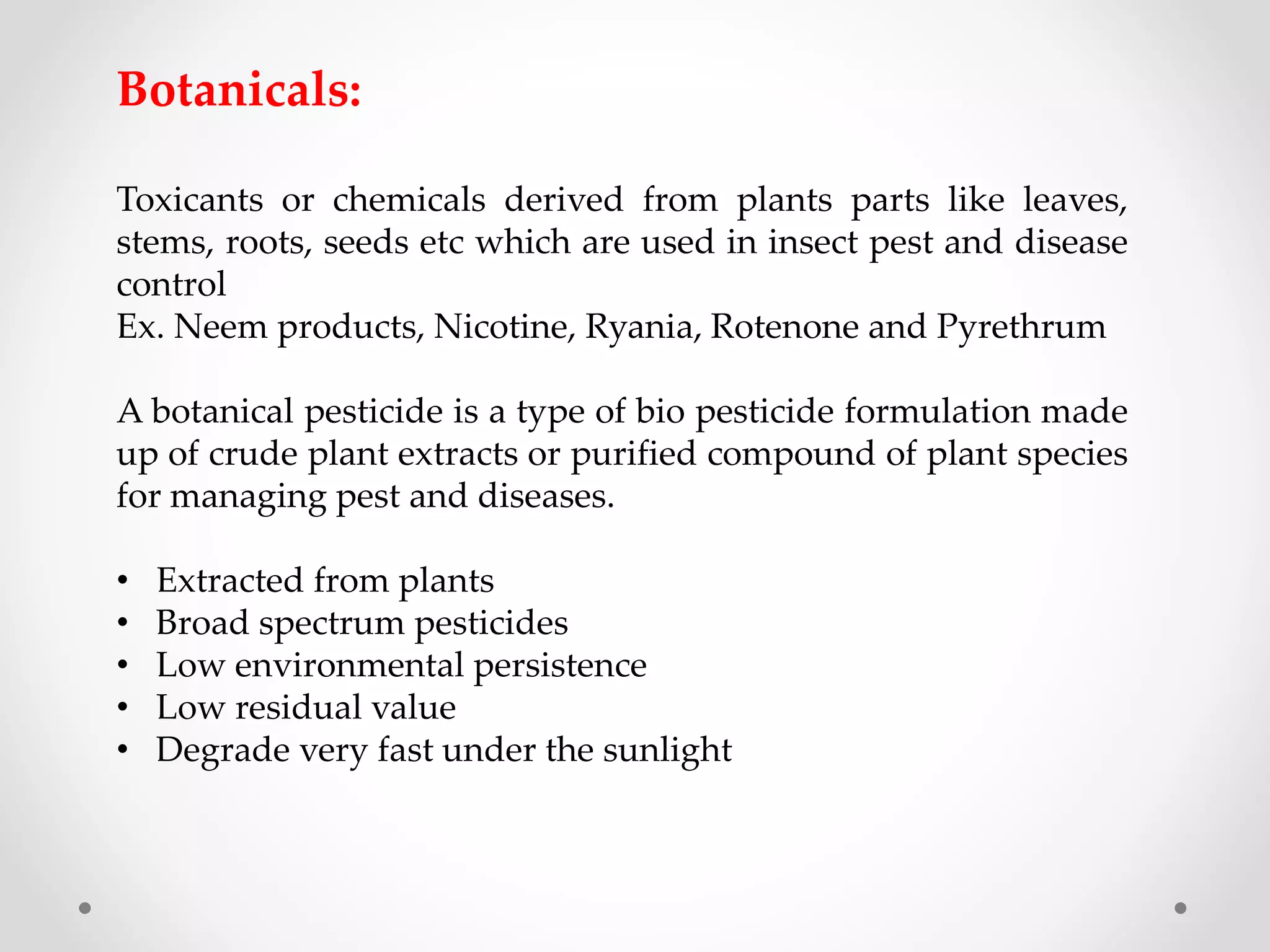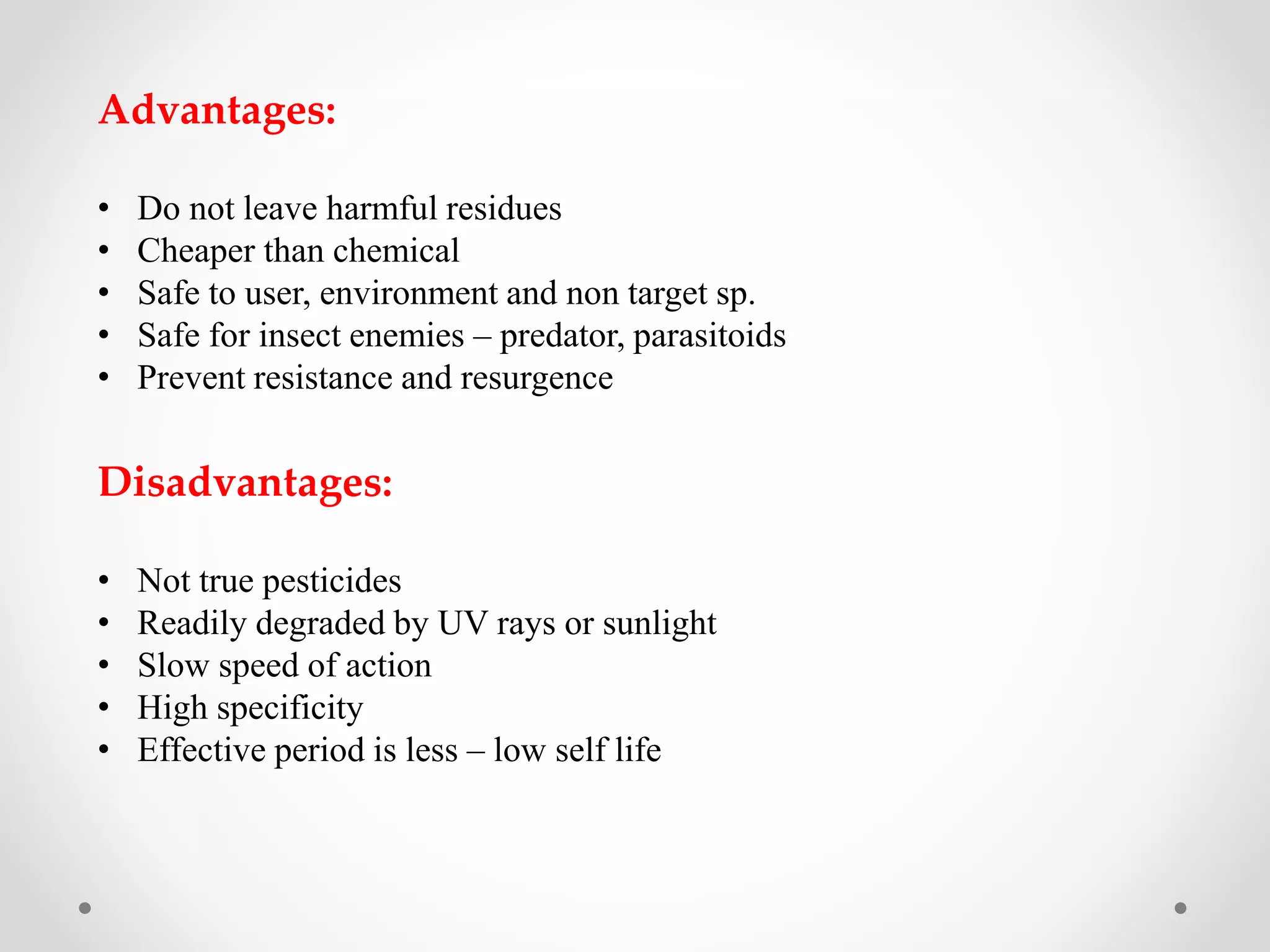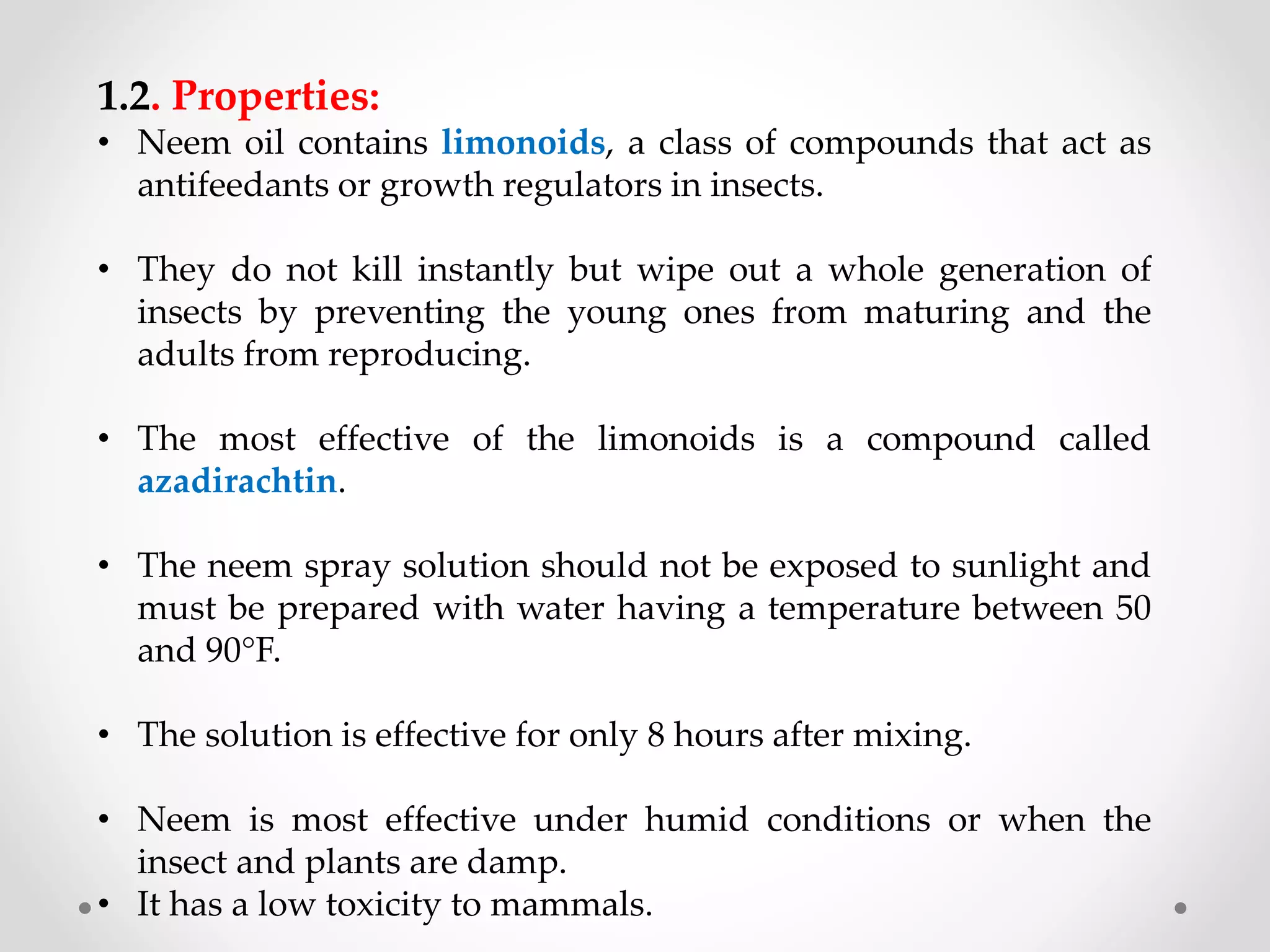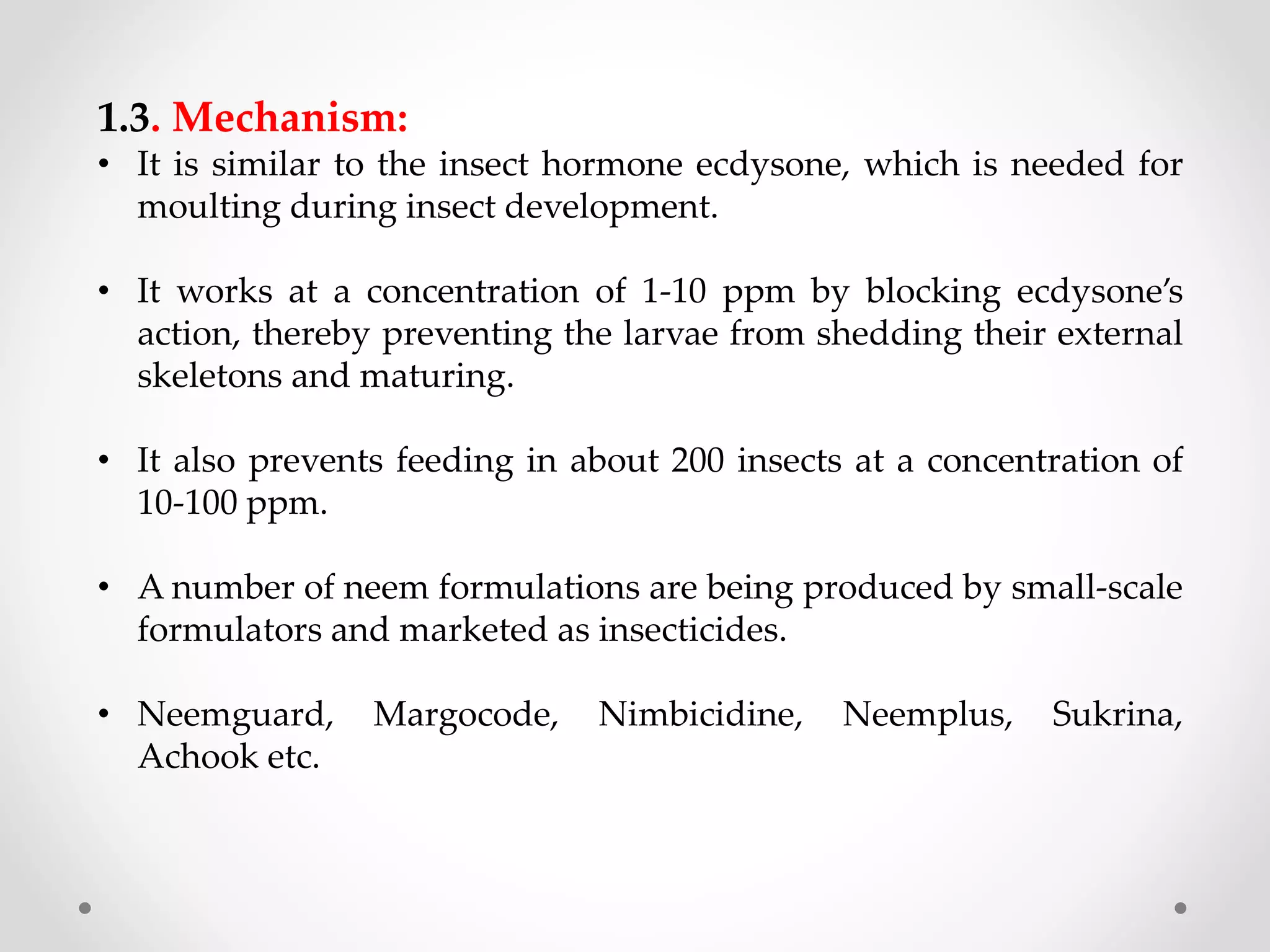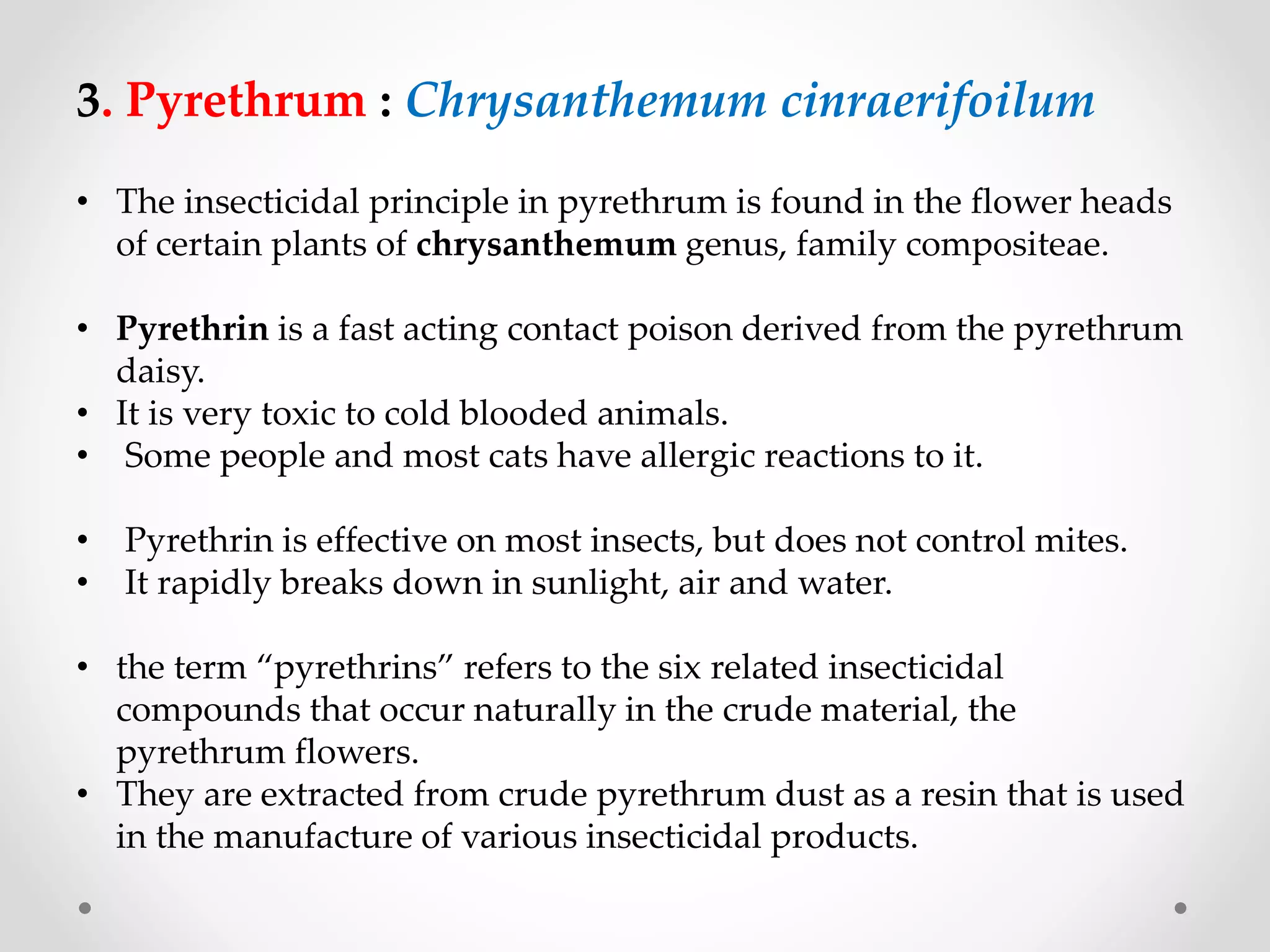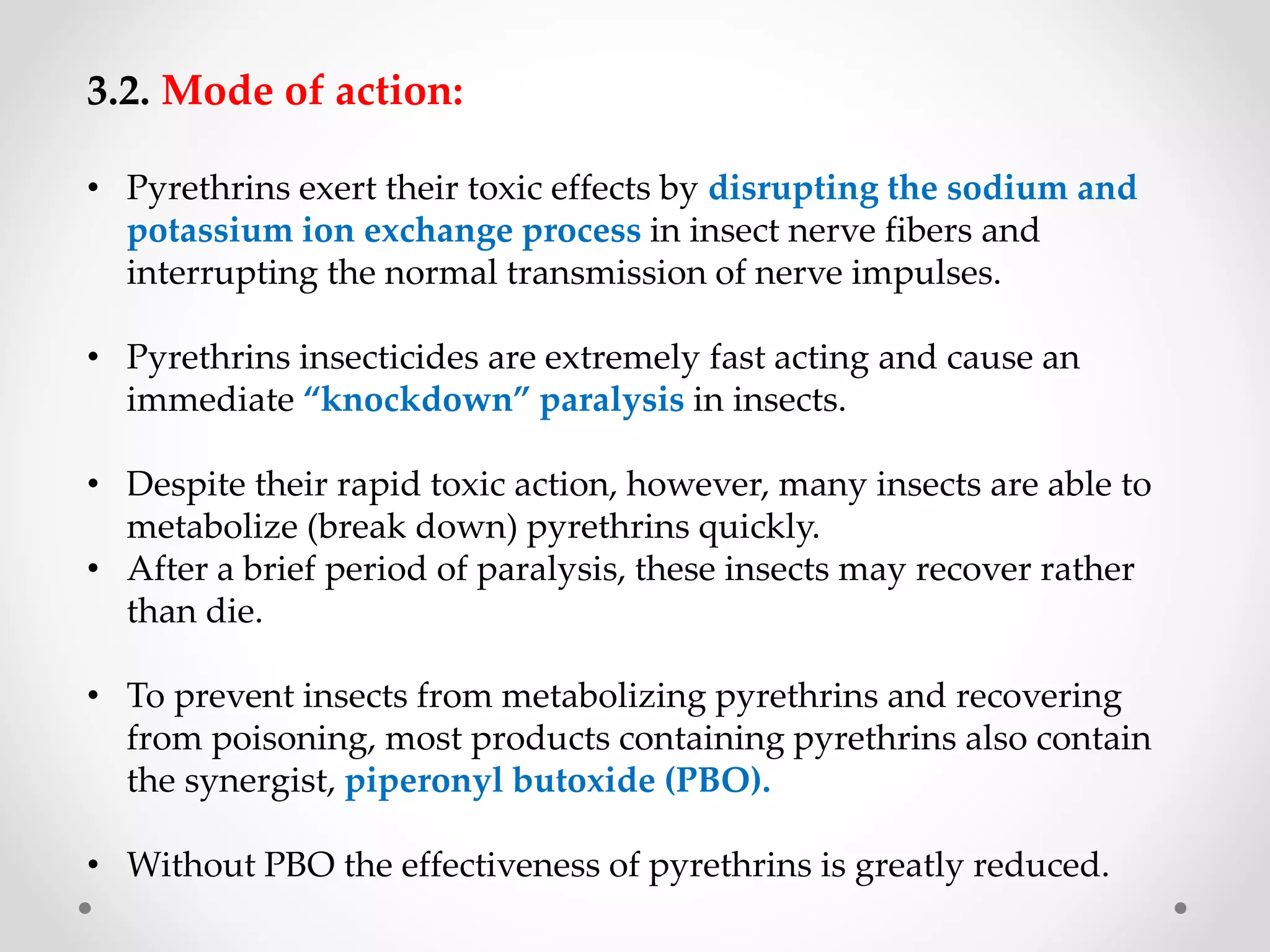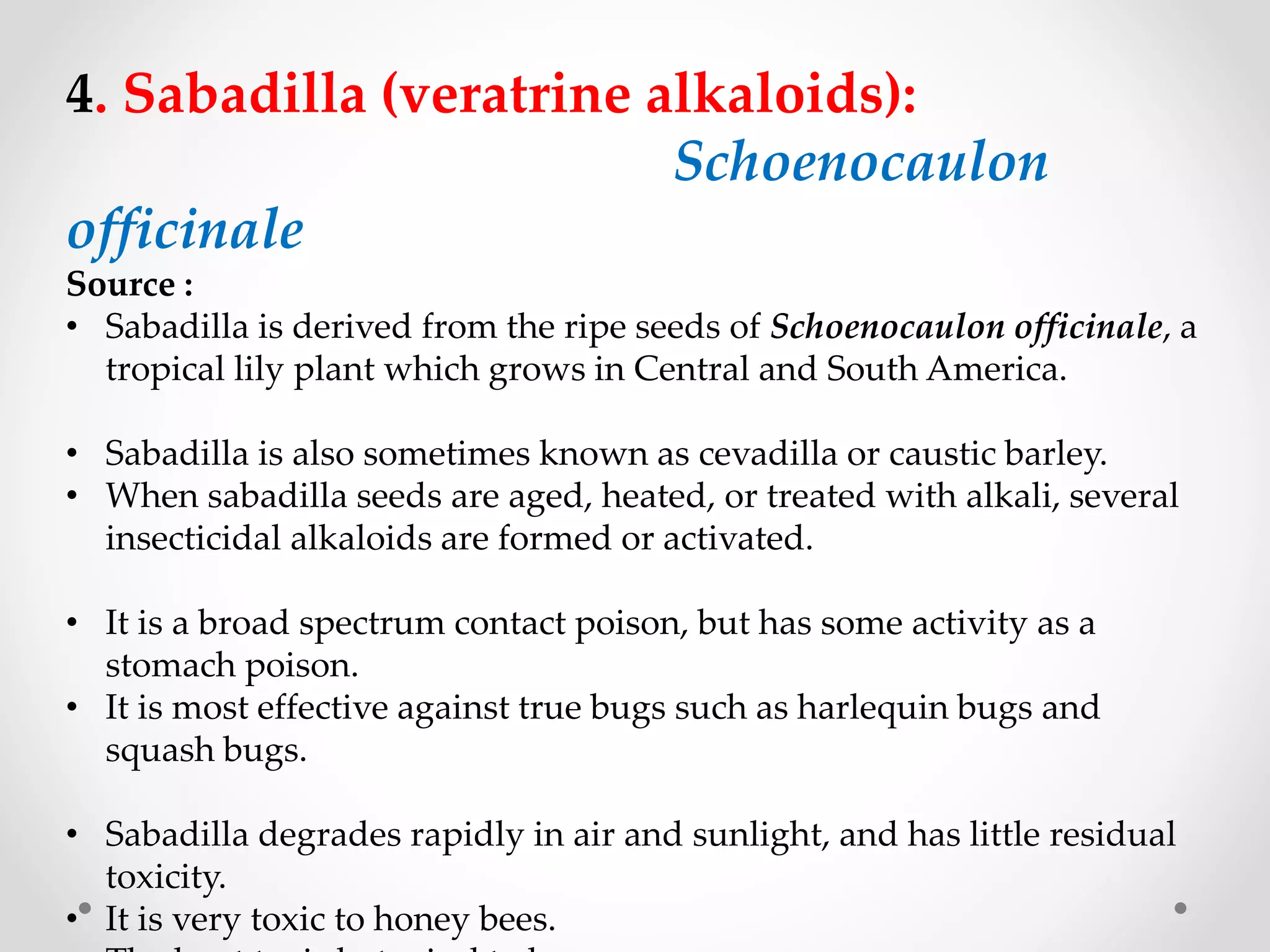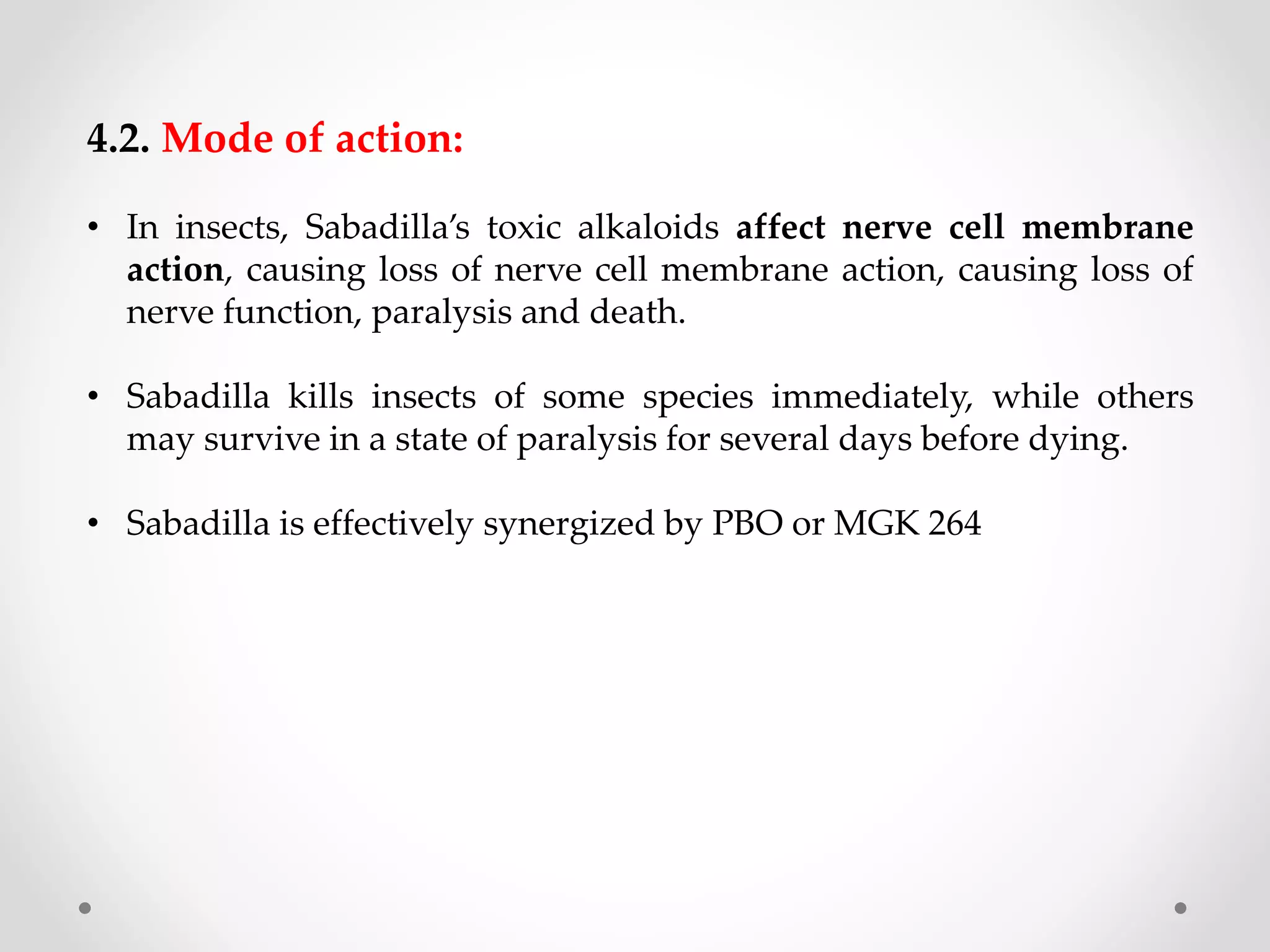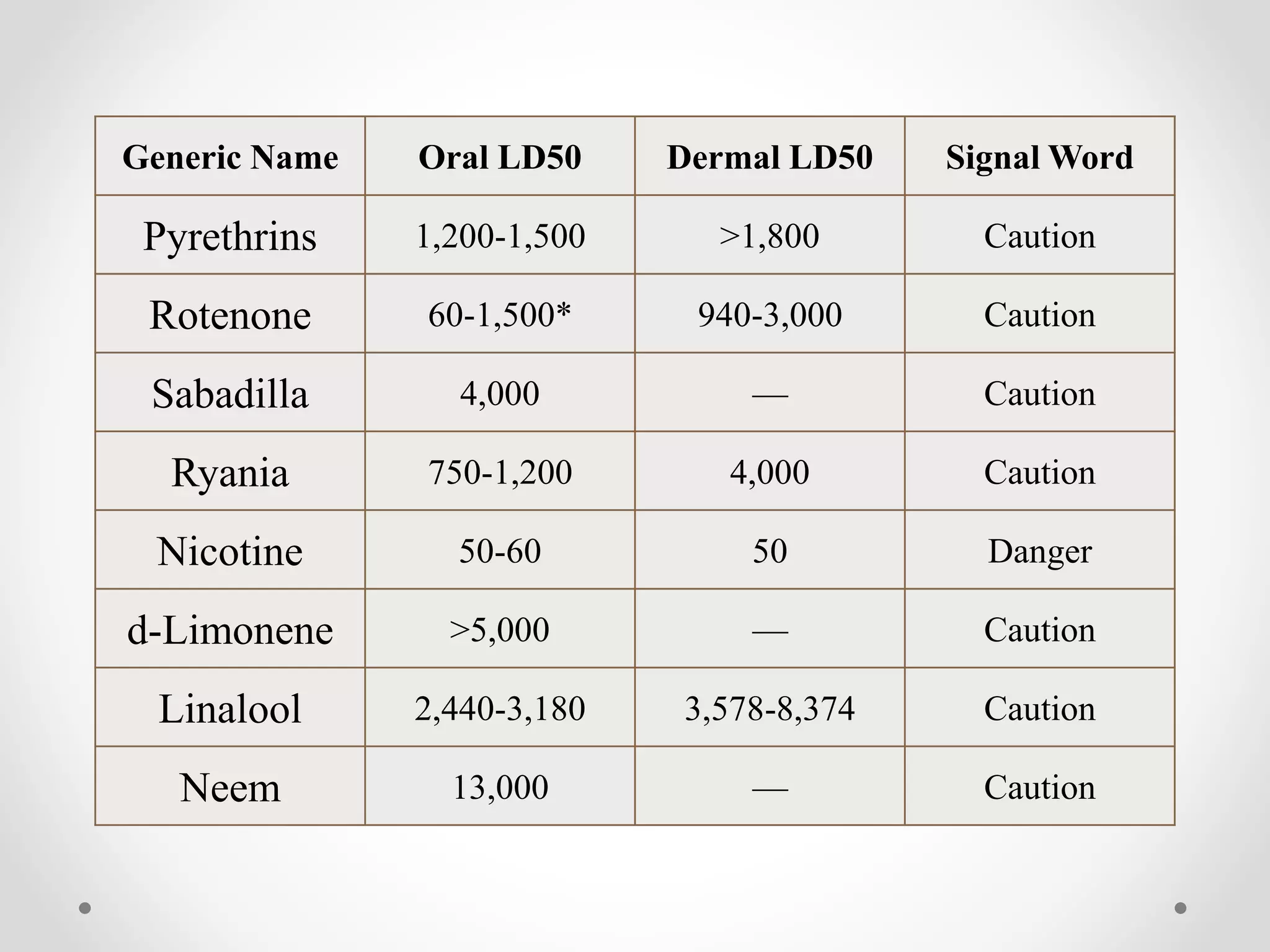The document discusses botanical pesticides derived from plants, highlighting their advantages, disadvantages, and specific examples like neem, nicotine, pyrethrum, sabadilla, and rotenone. Each example includes details on chemical properties, modes of action, effectiveness, and potential safety issues, emphasizing their roles in pest management and environmental impacts. Overall, botanical pesticides are portrayed as safer alternatives to traditional chemicals, with considerations for their efficacy and limitations.
